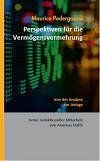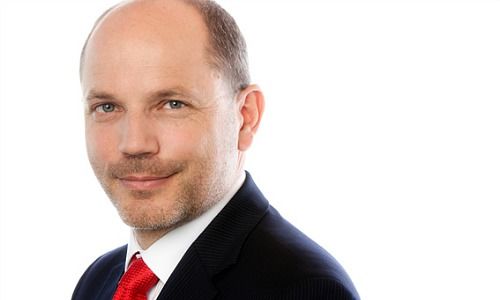Investors shouldn't get used to a specific level of interest rates, «artificially» set by central banks, argues Maurice Pedergnana, a Swiss economics professor, in his essay for finews.first.
finews.first is a forum for renowned authors specialized on economic and financial topics. The texts are published in both German and English. The contributions appear in cooperation with Pictet, the Geneva-based private bank. The publishers of finews.ch are responsible for the selection.
There was a time, before the financial crisis, when one didn't take much notice about central banks in general. Maintaining price stability as the preeminent target was being discussed in quiet meetings and implemented with the help of unspectacular measures. In the deduction of money supply targets, the annual rate of inflation was assumed at more or less two percent.
Meanwhile, the presidents of central banks, for instance Janet Yellen (U.S. Federal Reserve Bank, or Fed), Mario Draghi (European Central Bank, ECB) and Thomas Jordan (Swiss National Bank, SNB) have become as well-known as pop stars.
It is not just their speeches, but their facial expression or even words such as «patient» or «temporary» that are being followed closely in a bid to detect a shift in nuance. The protocols of meetings, nowadays published by many central banks, are being examined for the smallest of hints and interpreted by hundreds of analysts and market strategists.
«With its approach, the Fed averted a bigger financial crisis in the U.S. and allowed the economy to return to its growth potential»
Monetary policy was eased massively in the wake of the financial crisis to stabilize the economy and safeguard assets. The easing in China was stronger than in the U.S., Europe and Japan. But it was massive all round, including in Switzerland.
There were discernible differences in the chronological and instrumental procedure, which allow us to retrospectively evaluate the success of the measures. With its resolute approach, the Fed averted a bigger financial crisis in the U.S. and allowed the economy to return to its growth potential.
Now, in the U.S. the time seems to have come when further rate increases might follow the hesitant step of December 2015. This no doubt would cause massive shifts in the valuation of currencies and class of investments.
Higher rates for instance affect bonds. The longer the maturity, the bigger the loss in value. Today already I wonder how numerous bond funds are justifying their management costs – with a guarantee for the destruction of value.
«The real estate bubble fueled by the expansionary monetary policy is likely to burst»
Real estate assets are also affected by higher rates. The real estate bubble fueled by the expansionary monetary policy is likely to burst. The relevant UBS index shows for Switzerland that it has reached a risk zone – where historically it never remained for long...
Higher rates also increase the financing costs for companies. With gross revenue remaining unchanged, profit declines as a consequence. The banking industry will tend to profit from higher rates, and probably insurers as well. All other industries will come under pressure, in particular the capital intensive business models of infrastructure providers and telecommunications companies.
Further interest rate steps are a given in the U.S. The only question is when and by how much. Are we in Europe able to lean back as a consequence?
«The extremely low rates sooner or later will be a thing of the past»
The ECB in September 2014 already had discussed a massive government bond program and decided on it at the beginning of 2015. It was begun in March 2015 and rates subsequently dropped to a record both in the Eurozone and in Switzerland. But for how much longer?
The collapse of the oil price and the devaluation of the currency, which supported exports, gave an additional boost to Europe's economy. Based on this, the extremely low rates sooner or later will be a thing of the past. As much as negative inflation rates – rather, we will have to get to grips with figures above zero again.
The medium- and long-term rates won't drop any further. But if the rates are up too abruptly or strongly, new risks will develop. Rates don't just drop, at some point they rise again, and that's true for our country as well.
So one shouldn't get used to a specific level of interest rates, set «artificially» by central banks. If you don't prepare for a rate increase in Europe and Switzerland, you will rue it sooner or later.
 Maurice Pedergnana is chief economist at Zugerberg Finanz, one of Zug’s largest asset managers with 25 employees and which focuses exclusively on the Swiss market. The Swiss academic sat on the supervisory board of Zuercher Kantonalbank from 1999 to 2011. He's the author of several books and an economics lecturer at Lucerne University of Applied Sciences and Arts. His brand new book is «Perspektiven für die Vermögensvermehrung».
Maurice Pedergnana is chief economist at Zugerberg Finanz, one of Zug’s largest asset managers with 25 employees and which focuses exclusively on the Swiss market. The Swiss academic sat on the supervisory board of Zuercher Kantonalbank from 1999 to 2011. He's the author of several books and an economics lecturer at Lucerne University of Applied Sciences and Arts. His brand new book is «Perspektiven für die Vermögensvermehrung».
Previous contributions: Rudi Bogni, Adriano B. Lucatelli, Peter Kurer, Oliver Berger, Rolf Banz, Dieter Ruloff, Samuel Gerber, Werner Vogt, Walter Wittmann, Albert Steck, Alfred Mettler, Peter Hody, Robert Holzach, Thorsten Polleit, Craig Murray, David Zollinger, Arthur Bolliger, Beat Kappeler, Chris Rowe, Stefan Gerlach, Marc Lussy, Samuel Gerber, Nuno Fernandes, Thomas Fedier, Claude Baumann, Beat Wittmann, Richard Egger, Maurice Pedergnana, Didier Saint-George, Dieter Ruloff, Marco Bargel, Peter Hody, Steve Hanke, Andreas Britt and Urs Schoettli.


































